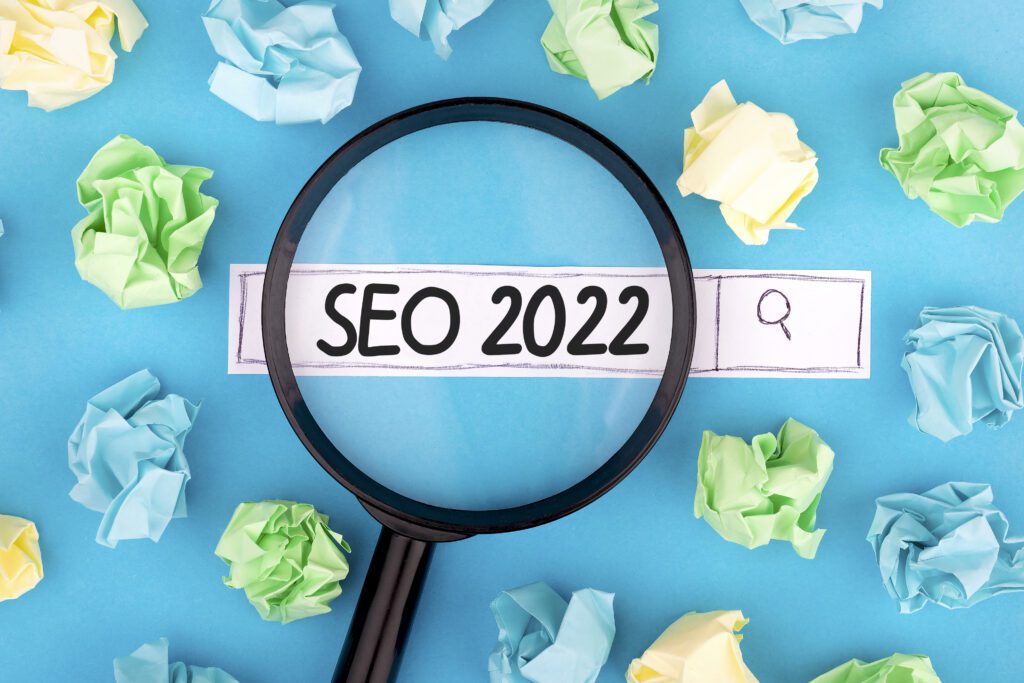SEO (Search Engine Optimization) is synonymous with change. Every time you turn around, Google is prioritizing one thing over another, causing SEO professionals to shift their focus according to the algorithm for that time period. Although these changes might seem completely random, believe us, Google has a method to their madness.
If you think about it, why do people use Google? Most of the time, it’s to find answers to their questions. Whether they’re searching for a location, product, service, or finding out how tall their favorite celebrity is, Google’s goal is to answer your questions. It does this by controlling what you see and how you see it, which is a little scary for a lot of people, but that’s a topic for another day. It analyzes trends and builds upon them to create changes, forging a path for the internet to move forward.
From a bird’s eye view, Google is constantly changing based on the way users search for information. This doesn’t just impact billion-dollar companies, it affects small businesses all around you who invest in digital marketing and SEO.
In this article, we’ll:
What is Local SEO?
At its core, local SEO is when a business attempts to enhance their online presence without the use of ads in their local community. Companies who invest in local SEO generally have the same goal in mind: rank in one of the top three spots in Google’s local pack and organic listings.
For those unfamiliar with the terms local pack and organic listings, the local pack is the section at the very top of the search engine results page with a short list of three companies that includes a link to their website, phone number, directions to their business, etc. To view more businesses, you click on the more places tab. The organic listings are a list of companies directly below the local pack, usually accompanied by Google Ads.
Investing in local SEO means your business is targeting people who are searching with local intent, often using the term “near me” or the name of the city/town after the main keyword to find their desired results.
Recent Changes in Local SEO
About 20 years ago, if a small business had one page with a few keywords sprinkled throughout the content, they were way ahead of the game. As time went on, companies had to adapt if they wanted to remain competitive, so web design and SEO strategies became more and more detailed.
Let’s fast-forward to modern day SEO. Digital marketing has reached a state of relevancy to the point that 71% of all small businesses have a website and nearly half of small businesses invest in SEO. Staying up to date with the changes Google throws your way is essential to becoming or remaining relevant online.
So, what are some of these recent changes?
-
- Focusing on on-site and off-site SEO – It’s no longer enough to focus solely on what’s happening on your website, but it’s essential to establish an overall digital presence that complements your site. (social media, backlinking, Google Business Profile which was formerly known as Google My Business, etc.)
- Creating an exceptional user experience on all devices – Having a website that looks good and functions at a high level on desktop, tablet, and mobile is critical to SEO efforts. In fact, in recent years, Google has prioritized mobile friendliness over desktop.
- Creating long-form content is a major priority in the eyes of Google – It wasn’t long ago where doing 400-500 word articles would help you rank online. Now the standard is 1,200-1,500 words.
- Using SQL and SQLite databases to automate SEO processes:- One noticeable trend is the automation of routine tasks and data management using SQL and SQLite database browsers to accelerate processes and improve workflows in SEO projects. A growing body of evidence suggests that SQL has helped many successful SEO experts to manage data, and to boost the productivity and output of the SEO team.
- Optimize quality images throughout your site – For a while, imagery was seen as secondary content on a website, but producing high quality images is now a primary focus for Google.
- Last, but certainly not least, Google is falling in love with websites that are voice search friendly – Whether it’s via phone, Alexa, Siri or any other device, nearly 50% of all search queries are done via voice search.

What It Means For Small Businesses
Tracking and implementing Google updates into your SEO and digital marketing strategy can have groundbreaking effects on your business. Generally, people searching for products or services on Google are an untapped resource of potential customers. These individuals haven’t fully decided which company they want to go with, so they turn to the most powerful search engine in the world to guide them.
Although Google is ever-changing, there’s one thing that hasn’t wavered: the results of those businesses who rank at the top of the local pack on organic results. Year after year, at least 50-60% of ALL clicks go to the top 3 search engine spots.
Oftentimes, it doesn’t require landing a top three ranking for an entire city or region to yield the sought after results. Over the last 2 years, there has been a 200% increase in “near me” related searches. For example, users are searching for “salon near me,” “restaurants near me,” or “web design company near me,” now more than ever. For individuals who think this is a trend that will eventually fade, the number of near me related searches increased by 900% from 2017-2019!
Thinking about ranking at the very top of an industry for an entire region might sound daunting for companies new to SEO. But these incredible statistics prove that outranking competitors within close proximity of your business can still provide astounding results.
What Are Long-Tail Keywords?
Long-tail keywords are longer, more specific keywords or phrases that are used when the consumer is closer to the point of purchase or used with voice search. The more commonly used short-tail keywords are shorter phrases that generally refer to broad search topics.
For example:
Short-tail keyword – Cat food near me
Long-tail keyword – Organic cat food for sensitive stomachs near me
While long-tail keywords generally have a much lower search volume than short-tail keywords, they help the user find exactly what they are looking for. A great time to consider long-tail keywords is if the generic short-tail terms have extremely high competition and there’s minimal opportunity to rank for those terms.
The key is discovering the long-tail keywords people are searching for and strategically using them throughout your on- and off-site content. If you offer a very niche product or service within your general scope of offerings, it might be worth it to research these long-tail keyword topics.
What is AI and How Has it Changed SEO?
 Long-tail keywords are growing in popularity because of the way people are searching online. Creating conversational-based content on your website is of growing importance. As previously mentioned, 50% of people are doing search queries via voice search. The more this number increases and the more data Google can gather from these searches, the more the emphasis on long-tail terms will increase. This has everything to do with Artificial Intelligence, or AI.
Long-tail keywords are growing in popularity because of the way people are searching online. Creating conversational-based content on your website is of growing importance. As previously mentioned, 50% of people are doing search queries via voice search. The more this number increases and the more data Google can gather from these searches, the more the emphasis on long-tail terms will increase. This has everything to do with Artificial Intelligence, or AI.
Artificial Intelligence is a wide-ranging branch of computer science concerned with building smart machines capable of performing tasks that typically require human intelligence.
Yes, that sounds a little scary and iRobot-esque. But we’ve all been living with AI for years. The reality is that your smartphone, Alexa, Siri, email spam filter, and, yes, the Netflix recommendation setting you use on a daily basis, is AI.
AI functions differently than normal search patterns. People ask Alexa, “Where should I go for dinner?” but they might search “dinner near me” while typing on their phone or computer.
This ties in with how SEO is evolving around AI and voice search patterns. Think about it: when you ask Alexa or your phone a voice search question, it tends to be “long-tailed.” And if Google is evolving based on the searches people are inquiring about, it’s essential to be aware of this and adapt to the changes.
Since people are continuing to search for products and services as if they’re having a conversation, creating conversational content is growing in importance.
This means discovering what long-tail keywords people are searching for in your industry, and implementing these into your digital presence to create a personalized experience for the user.
For some companies, adding long-tail keywords and AI voice search patterns into your digital strategy isn’t applicable yet. But some businesses in heavily searched, high-volume industries center their entire strategy around voice search and long-tail terms.
No matter what boat you’re in, remaining vigilant of these changes will help your business remain relevant online.
You Need a Trusted Partner
Things are changing in SEO, and unless you’re a full-time SEO professional, it’s nearly impossible to stay on top of all the trends. The fact is, SEO is just one piece to the digital marketing puzzle.
If SEO makes sense for your brand, it’s essential to find a trusted partner to guide you through the process – and even let you know if SEO matches your company goals and overall business strategy.



